Hooray for the homebuyer who understands the importance of lining up financing before ever stepping foot into a house for sale or placing eyes on a real estate listing website.
It’s one thing to understand the steps to take in the home buying process and yet another to understand the whole “how does the loan stuff work?” question.
Because it seems like such a mysterious process, most first-timers look for the lender with the lowest interest rate, sign on the dotted line and call it a day.
That is a huge mistake, and here’s why: there’s more to a loan than the interest rate and not all loan products are identical, so it takes some serious comparison shopping to make sure you’re getting the best deal out there.
It starts with a comparison of the three most important parts of a mortgage loan – those for which the borrower has to pay.
Find some lenders to compare
Your best source for contact information for at least one lender is your real estate agent. Check online sites for attractive rates and add those lenders to the list.
One of the most popular comparison sites is BankRate.com.
If you’ll be using an FHA loan, you’ll need to shop among FHA’s approved lenders, which you can find here.
Don’t forget to list your local bank, especially if you have a good working relationship with the manager. Finally, consider using the services of a mortgage broker. These men and women shop for loans that match your criteria and circumstances, from a variety of lenders.
Rate
The first thing you need to understand is that advertised rates don’t necessarily apply to the product you want to purchase.
We wanted to find out which loans were offered for comparison today at Bankrate.com. The criteria we entered was for a purchase loan, for a purchase price of $257,939, a down payment of 5.4 percent (the nationwide average), a credit score of 720 to 739 for a 30-year loan.
The lowest interest rate offered for this scenario is 3.625 percent. But the site lists other options we may be interested in, including several lenders offering 2.625 percent rates.
Look closely, though, and you’ll see that those low rates are for a 20-year term.
These rates, by the way aren’t the whole ball of wax when it comes to understanding how much your loan will cost. It’s the annual percentage rate, or APR, that you want to use when comparing rates.
The APR reflects the interest rate plus fees. According to Bankrate.com, “the APR shows which loan is less expensive over the entire term of the loan.”
In our scenario above, both loans offer the same interest rate. Their annual percentage rates, however, are 3.631 percent and 3.64 percent.
Know how much – to the penny – that you’ll be putting down in cash for the home. Then, determine what kind of a mortgage rate you want: fixed rate or adjustable.
Finally, decide on a term for the loan: 30 years, 15 years, five years, etc. You may eventually change your mind on the last consideration after shopping around, but that’s ok.
Now, pick up the phone and make some calls. Ask the following questions:
- Request the lender’s current interest rates and find out whether these rates are the lowest for just that day or for the week and if the rates quoted are for adjustable or fixed mortgages.
- If you’re inquiring about adjustable rates, ask when the rate increases, how the payments vary and whether the payments will go down with a reduction in the interest rate.
- Ask for the loan’s annual percentage rate (APR) and use that to compare the cost of each loan you’re comparing.
Points
Bank of America defines points as “fees paid to the lender at closing in exchange for a reduced interest rate.” One point equals one percent of the loan amount.
Ask the lender’s representative to translate the points quoted into a dollar amount. This makes it easier to determine exactly how much you’ll be paying for the loan and, thus, easier to compare it to other offers.
Fees
Costs of the loan listed vaguely as “fees” need to be itemized for you to compare one lender to another. Ask the loan representative to do that for you.
The Loan Estimate Form
Legally, the lender must provide you, within three days of applying for the loan, a Loan Estimate Form, detailing of all fees that will be due at closing.
This form is what you will use to compare lenders. If you notice any large discrepancies between lenders, call them and ask for clarification.
When you’ve chosen a lender, see if it will allow you to lock in the interest rate, especially if the Feds seem on the verge of raising them. There may be a cost involved, so find out what that is.
To pay less on your monthly house payment requires that you take this initial step – even before choosing the house you’ll eventually purchase.





